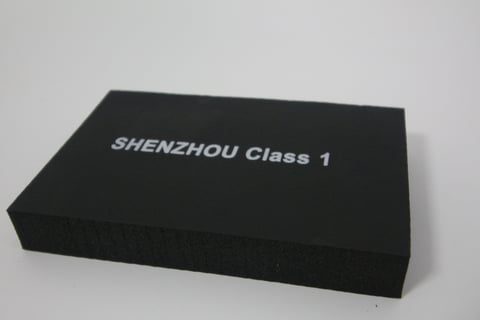
What You Need to Know About Insulated Sheet
12/18/20234 min read
Insulated sheeting, specifically rubber foam, provides a user-friendly and convenient DIY solution for enhancing insulation in various applications. Available in standard-size sheets like 4x8 feet, as well as smaller sizes, insulated sheets come in a range of thickness options from 1/4 inch to 2 inches, catering to diverse insulation needs. In some instances, thicker variations of rubber foam insulated sheets are also accessible, although they might require special ordering to meet specific project requirements. This versatility in size and thickness makes rubber foam insulated sheets an adaptable and accessible choice for those looking to incorporate effective insulation through a straightforward and manageable DIY approach.

What is insulated sheet?
Insulated sheets, specifically rubber foam, offer a compelling alternative to the commonly used fiberglass batt insulation found in many homes. Not only does rubber foam insulation exhibit a higher R-Value per inch of thickness, but it also boasts resistance to moisture and ease of handling.
There are various types of insulated sheets that DIYers should be familiar with:
Expanded Polystyrene (EPS): Comparable to the material used in disposable coffee cups, EPS provides an R-value of 4 per inch of thickness, making it an economical choice for foam board insulation. It is frequently used under roofing, over foundation walls, and beneath siding, serving as an effective insulating layer.
Extruded Polystyrene: Recognizable as rigid pink or blue panels available in various thicknesses at home centers, extruded polystyrene offers a denser option compared to EPS, providing an R-value of 5 per inch of thickness. With options for straight or tongue-and-groove edges to minimize air movement, this type of insulation is versatile and commonly used in applications such as foundation insulation panels.
Polyiso (Polyisocyanurate): Representing a denser and slightly more expensive foam board insulation, Polyiso delivers an impressive R-value of 6 per inch of thickness. Often equipped with a foil-faced surface to reflect radiant heat, Polyiso is available in different thicknesses and finds application over house sheathing underneath siding or in attic spaces, where its reflective properties contribute to effective insulation.
In summary, insulated sheets, specifically rubber foam, provide a range of options for DIYers seeking efficient and versatile alternatives to traditional insulation materials.

Due to its moisture resistance, insulated sheets, specifically rubber foam, stand out as an excellent option in scenarios where exposure to moisture is a concern. Ideal applications for rubber foam insulation include exterior foundations, interior basement walls against the foundation, and the exterior of a house beneath a house wrap. The water-resistant properties of rubber foam make it a suitable choice for areas prone to dampness.
While rubber foam insulation tends to be more expensive than traditional batt insulation, its effectiveness in moisture-prone environments justifies the cost. It is advisable to opt for rubber foam insulation when moisture is a significant factor, aligning with the requirements of the specific application and fitting within budget constraints. This targeted approach ensures that the investment in rubber foam insulation is optimized for areas where its moisture-resistant attributes provide valuable benefits.
Categories
Popular
Where can I get high quality foam sheet insulation?
We have focused on the research of thermal insulation materials for forty years and have obtained many international certifications. We are mainly engaged in glass wool, thermal insulation rubber and plastic, rock wool and other products. Choose us to give you a satisfactory experience
When to use insulated sheet?


How to use insulated sheet?
Insulated sheets, specifically rubber foam, offer ease of customization through various cutting methods, such as using a circular saw with a masonry blade or scoring with a utility knife, akin to the process used for drywall. This versatility allows for tailored installations to suit specific project requirements.
When securing rubber foam insulation, several options are available. Large washers with screws can be employed for a robust attachment, providing stability. Alternatively, a specialized adhesive designed for adhering rubber foam insulation offers a secure and durable bonding solution. For smaller pieces or intricate areas, sealing them in with caulk or utilizing spray foam can effectively ensure a snug fit and enhance insulation performance.
This flexibility in cutting methods and attachment options makes rubber foam insulation a practical and adaptable choice for various applications, allowing for efficient and customized installations in construction and insulation projects.
















About Us
Click the button below to get more information about us
Newsletter
Click to subscribe for more information
Follow Us
Contact Us
Address
Dacheng town, Langfang City, Hebei province, China
Phone
+86 185 03165 626
